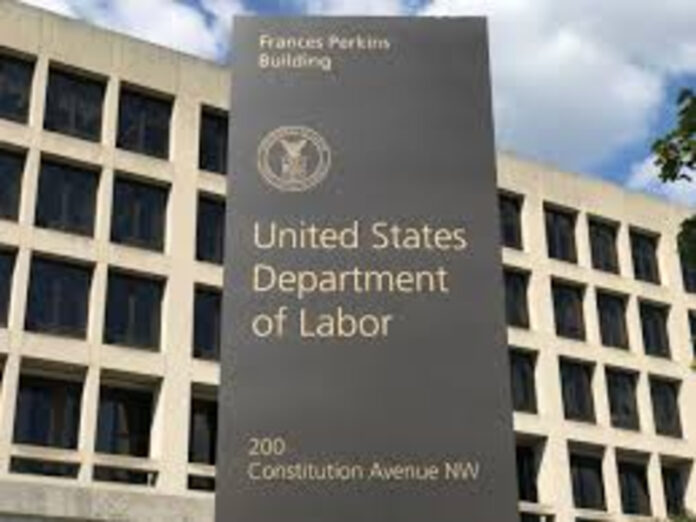August 2025 Jobs Report: Shows Signs Of A Cooling Labor Market
Friday, September 5, 2025, 12:00 P.M. ET. 4 Minute Read, By Jennifer Hodges: Englebrook Independent News,
WASHINGTON, DC. The August 2025 U.S. employment report, released by the Bureau of Labor Statistics, painted a decidedly lukewarm picture of the labor market, with employment growth shrinking to minimal levels and several warning signals emerging.
Key Findings;
Nonfarm payrolls increased by only 22,000 jobs in August, a sharp decline from earlier months and below the expectations of most economists. The unemployment rate rose modestly to 4.3%, up from 4.2% in July. Revisions to prior months show more weakness: June’s gains were revised down into negative territory (−13,000 jobs), while July’s gain was nudged up slightly — but the net effect was that combined June and July gains are now 21,000 jobs lower than previously reported.
Labor force participation held relatively steady at 62.3%, and the employment-to-population ratio remained unchanged at 59.6%. Among demographic groups, there was little change month-to-month; long-term unemployment remains elevated at ~1.9 million people (25.7% of the unemployed), although it also showed little movement in August.
On the industry side, gains in healthcare (approximately +31,000 jobs, although below the prior 12-month average) and social assistance (+16,000) were offset by declines in the federal government (−15,000) and mining, quarrying, and oil & gas extraction (−6,000). Wholesale trade also continued a downward trend (−12,000), and manufacturing employment was flat to slightly negative (−12,000) in August.
What’s Behind the Softness?
Several factors appear to be contributing to the sluggish pace of job growth:
Reduced Hiring Momentum;
The trend of weak monthly gains has persisted since spring. Payroll growth has averaged only ~29,000 jobs per month in the past three months, vs ~82,000 per month during the same period last year.
Trade & Tariff Uncertainty;
Many economists attribute part of the slowdown to uncertainty around tariffs and trade policy. Elevated tariffs are raising input costs and making business planning more difficult, which in turn may be dampening hiring.
Labor Supply Constraints / Immigration Policy;
Tighter immigration enforcement and scrutiny may have reduced the pool of available workers, contributing to slower labor market churn.
Federal Workforce Contraction;
The continued decline in federal employment (−15,000 in August, ~97,000 since January) is subtracting from overall job growth.
Statistical “Noise” and Revisions;
The revisions to June and July highlight how sensitive the data are to late reporting and seasonal adjustments. The Bureau of Labor Statistics notes that seasonal quirks can sometimes weaken August figures initially.
Implications for the Fed & Economic Outlook;
The weak August report certainly adds weight to market expectations that the Federal Reserve will deliver a 25-basis-point rate cut at its upcoming September meeting. Fed Chair Jerome Powell has already flagged labor market risks in recent remarks, and this report reinforces the view that labor market cooling is now a meaningful constraint on the broader economy.
At the same time, inflation remains a concern, meaning the Fed is walking a tightrope: easing policy too much could reignite price pressures; easing too little risks hampering hiring further and dragging consumer sentiment.
On the business side, many companies are holding back on hiring given uncertainty about demand, supply chain disruptions, and regulatory policy. Consumer sentiment has weakened in recent surveys, and weaker hiring could feed back into slower consumption growth.
What to Watch Next
- Whether the September jobs report shows any rebound or further deterioration in labor demand.
- Whether the BLS issues any further downward revisions to earlier months — historically, August’s weak figures sometimes reverse in subsequent months.
- Wage growth trends: if wages continue growing (albeit slowly), that may sustain consumer spending even if hiring is tepid.
- The Fed’s next moves: if the labor market tepidness continues, monetary easing may be more aggressive or prolonged than markets currently expect.
Overall, August’s jobs data underscores that the U.S. labor market is decelerating. While it’s not yet in contraction, the slowdown is more pronounced than many hoped, and it raises fundamental questions about whether the economy can sustain momentum absent policy support. If you like, I can also pull together some charts or compare this report to other recent months.

